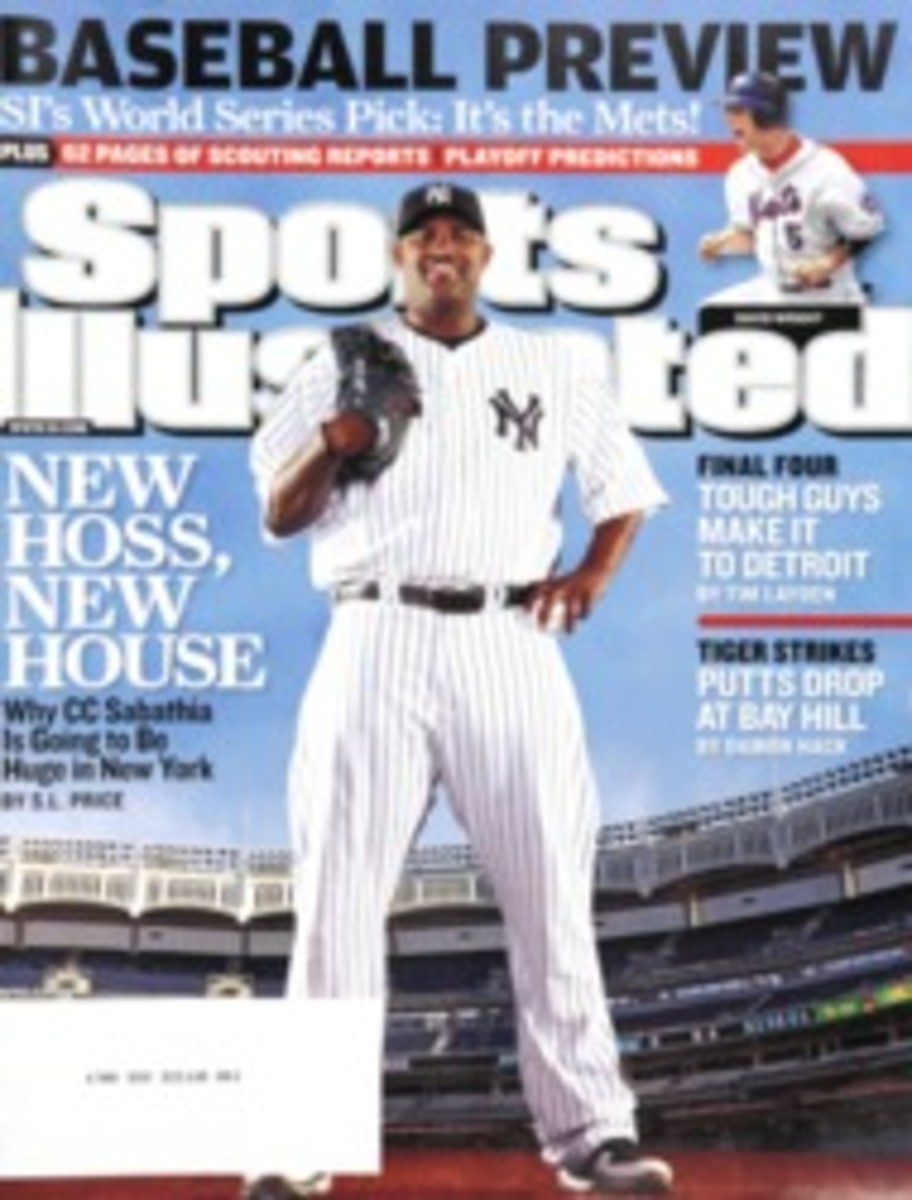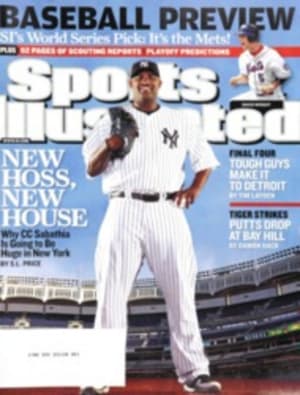
2 ARIZONA DIAMONDBACKS
Something'sMissing
Their young hitters are the envy of the game, but they whiff too much to winbig
BOB MELVIN leftno red rock unturned when investigating what went wrong in the desert lastseason. From bad baserunning to bad defense and struggles in the startingrotation and the bullpen, the Arizona manager believes that he has enoughmaterial to write a book explaining why his team coughed up the division leadlast September after being in front for 153 consecutive days.
From the owners'box down to the dugout, the Diamondbacks take their statistics seriously, andif there's one number that can't be ignored, it's all those strikeouts. Arizonafanned 1,287 times in 2008, second most in the majors. "We have some guyshere who are going to strike out, but they've got some power," Melvin says."It's when we strike out. We need to make more productive outs."
The strikeoutproblem was so profound, Melvin says, that he often had to turn off the greenlight in obvious running situations (3 and 2, less than two outs, for instance)for fear of double plays. Truth is, though, for the D-Backs an even biggerproblem than making contact with runners on—they fanned 346 times with men inscoring position (tops in the majors)—was getting on base in the first place.Arizona's .251 batting average was the NL's third worst, its .327 OBP waseighth and its 720 runs was 10th in the league, inexcusable numbers for a teamthat plays in one of the most favorable hitters' yards, Chase Field.
For Melvin andhis staff during spring training, combating the K's was a top priority. Battingcoach Rick Schu devised an innovative hitting drill that involves ... nothitting a thing. Schu set up pitching machines in side-by-side batting cages atthe Diamondbacks' spring compound in Tucson. In the first cage hitters wouldstare down a breaking ball that cut over the plate for a strike. In the secondone they would eye a curveball that broke just off the plate. The following daySchu would mix in different pitches and locations to simulate what a battermight expect to see deep into a count.
"It helps youget [a better sense of] the flight of the ball and its spin," says thirdbaseman Mark Reynolds. "You figure out where the ball starts out when it'sgoing to be a ball or a strike." Reynolds stands to gain the most from thedrills, since he set a major league record last season with 204 strikeouts. Healso led the team with 28 home runs and 97 RBIs. "My goal is to be less ofa roller-coaster ride and more of a flat train ride," Reynolds says.
But the25-year-old Reynolds is just one of many serial offenders in the K'sdepartment. Centerfielder Chris Young, 25, went from 141 whiffs as a rookie, in'07, to 165 last season. Rightfielder Justin Upton, 21, is going to be a star,but he went down on strikes 121 times in only 356 at bats as a rookie. Add in26-year-old shortstop Stephen Drew (109) and 28-year-old catcher Chris Snyder(101), and five Arizona players—incidentally, the core of the lineup—crackedthe century mark. "When there's a runner on third with less than two outs,the ball's got to be in play," Schu says. "These guys have tounderstand that a ground ball to short is an RBI. If they learn to shorten theswing, they'll get the job done."
The no-swingingdrills in the batting cages are helping. Young and Upton, in particular, saytheir batting eyes have improved and that they're learning which pitches to layoff. Then again, mastering a drill is one thing. "It's pretty easy when youknow what's coming," says Reynolds, "but there's nothing like the realthing."
CONSIDER THIS AModest Proposal ...
With Eric Byrnesfully recovered from the hamstring injury that curtailed his 2008 season, therewill be the temptation to put the fan-favorite, well-paid veteran into thestarting lineup. The Diamondbacks, however, have three low-cost,righthanded-hitting outfielders on the upslope of their careers, includingChris Young and Justin Upton, who have the potential to be superstars. Alongwith leftfielder Conor Jackson, the trio has to play every day for Arizona tocontend. Byrnes (left), despite two years and $22 million remaining on anill-advised three-year deal, is best-suited as a fourth outfielder and benchplayer who can pinch-run for most of the lineup, pinch-hit against lefties andprovide occasional days off for the starters. Energy is good, left turns atfirst base are better; Byrnes and his .325 career OBP don't provide enough ofthe latter.
THE NUMBERS
DON'T LIE
216
Fewest inningsthat either righthanders Brandon Webb, 29, or Dan Haren, 28, have pitched inthe last four seasons. Webb, the NL Cy Young winner in '06 and runner-up ineach of the next two seasons, and Haren, who had an outstanding 5-to-1strikeout-to-walk ratio in '08, will take some of the heat off a bullpen intransition following the off-season departures of closer Brandon Lyon and JuanCruz, the team's best reliever last year.
The Lineup
WITH 2008 STATISTICS
Manager BobMelvin
FIFTH SEASON WITH DIAMONDBACKS
[This articlecontains a table. Please see hardcopy of magazine or PDF.]
[This articlecontains a table. Please see hardcopy of magazine or PDF.]
NEWACQUISITION
B-T: Bats-throws
WHIP: Walks plus hits per inning pitched
PVR: Player Value Ranking (explanation on page 69)
NOW AT SI.COM/VAULT
EXCERPTED FROM SI
November 12, 2001
In the seventh inning of the seventh game of the 97thWorld Series a strange desert wind arose as gently as a whisper inside Bank OneBallpark in Phoenix and quickly grew in strength. It swirled in the hangarlikestadium, tossing to and fro flecks of umber dust and dirt, napkins, plasticbags and other orphaned trash, and fine droplets of rain that seemed tooethereal ever to reach the ground. The World Series had become a supersized,Southwestern-style snow globe, and it did so at the exact moment on Sundaynight when you wished that you could preserve the essence of baseball like asouvenir on a shelf.
—TOM VERDUCCI
For free access to all D-Backs stories and photographsfrom the SI archives, plus video clips, go to SI.com/vault.
PHOTO
MARK J. REBILAS/US PRESSWIRE
K RATION Star-in-the-making Upton provided good power but also a steady diet of strikeouts: one every 2.9 at bats.
PHOTO
BRAD MANGIN (BYRNES)
PHOTO

